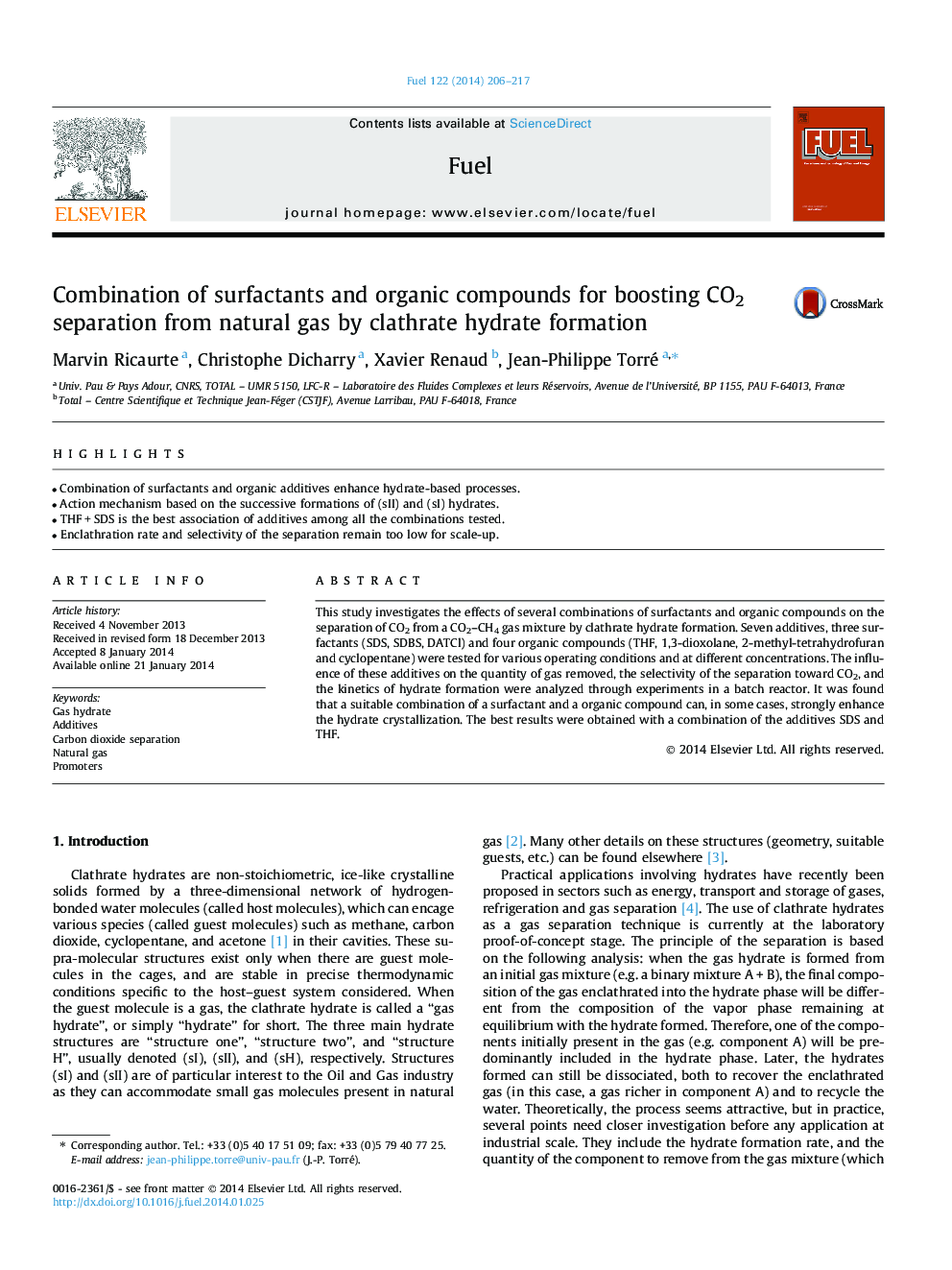| Article ID | Journal | Published Year | Pages | File Type |
|---|---|---|---|---|
| 206136 | Fuel | 2014 | 12 Pages |
•Combination of surfactants and organic additives enhance hydrate-based processes.•Action mechanism based on the successive formations of (sII) and (sI) hydrates.•THF + SDS is the best association of additives among all the combinations tested.•Enclathration rate and selectivity of the separation remain too low for scale-up.
This study investigates the effects of several combinations of surfactants and organic compounds on the separation of CO2 from a CO2–CH4 gas mixture by clathrate hydrate formation. Seven additives, three surfactants (SDS, SDBS, DATCl) and four organic compounds (THF, 1,3-dioxolane, 2-methyl-tetrahydrofuran and cyclopentane) were tested for various operating conditions and at different concentrations. The influence of these additives on the quantity of gas removed, the selectivity of the separation toward CO2, and the kinetics of hydrate formation were analyzed through experiments in a batch reactor. It was found that a suitable combination of a surfactant and a organic compound can, in some cases, strongly enhance the hydrate crystallization. The best results were obtained with a combination of the additives SDS and THF.
